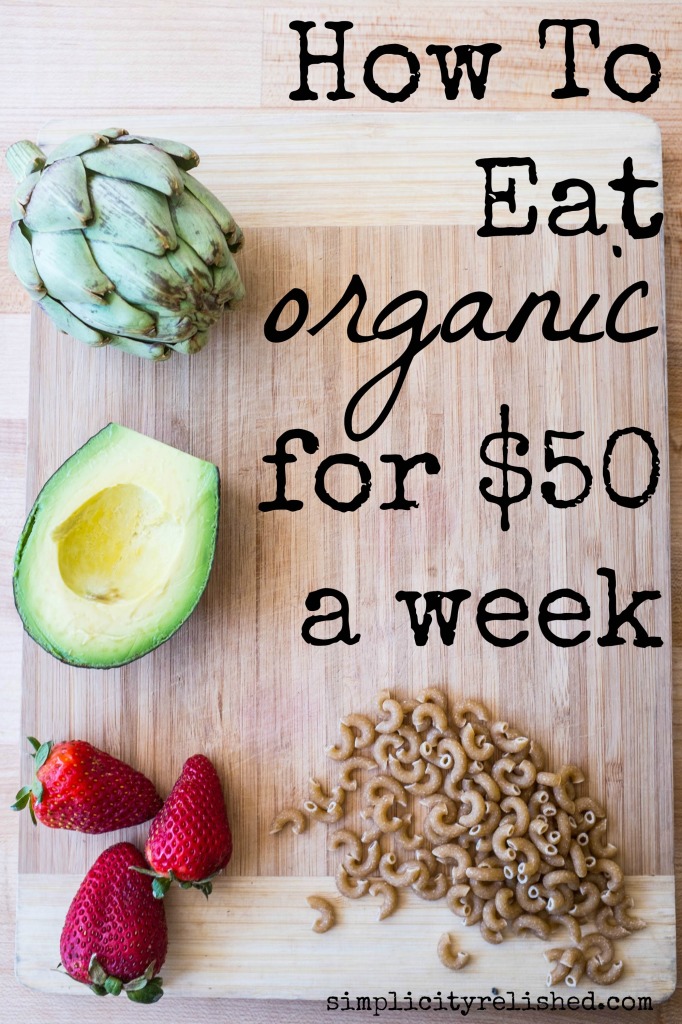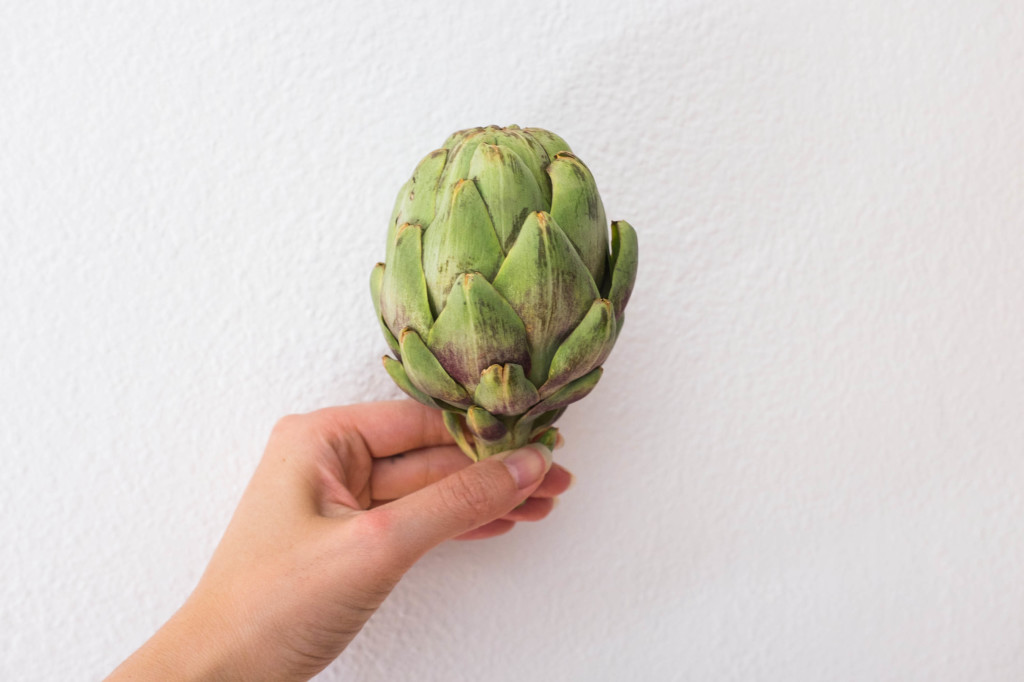I wish healthy, clean eating were possible for everyone. What I think most people don’t realize, though, is that it actually might be possible for them.
Eating organic does not have to mean purchasing hundreds of dollars of groceries every week. Simple, all-organic homemade meals can cost as little as $50 a week per person (or less with more people!), so if you have that much to spend, it’s time to start!
Tip #1: Choose Community-Supported Agriculture and shop at the farmer’s market ($20-25).
Have you heard this tip before? Well, it’s truly effective. Our small CSA box comes packed weekly with fresh, delicious, all-organic produce, at only $22.80. Read more about how CSAs work here!
If CSA is not an option, then go for fresh produce with high nutritional payoff: kale, collards, chard, broccoli, brussels sprouts, red cabbage, and red beets, just to name a few. For the same dollar amount you’ll get TONS more vitamins and phytonutrients in these foods. To read more about the most nutrient-dense produce available, check out this book I love.
Tip #2: Find the base carbs that work for you ($2-5).
I’ll be honest: if you’re cutting all carbs (including beans and legumes) in favor of a meat-and-vegetable diet, then $50 a week might be hard.
But if you’re open to expanding your carb repertoire beyond pasta and bread, then you’re in luck! Grains and legumes are excellent sources of nutrients and can be the base for a delicious, easy meal. Organic grains, beans and whole-wheat pastas are just $1-3 per pound, and are great foods to stock your pantry.
Grains such as quinoa and legumes such as black beans and lentils are super affordable and high in protein. They also can take lots of different flavors and spices, so you never get bored!
Tip #3: Choose your protein carefully and consciously ($10-20).
Farming practice is another discussion for another time, but I strongly recommend sustainably and ethically raised meat, eggs and dairy. Less of a good thing is better than an abundance of a not-so-good thing.
The grass-fed organic ground beef we purchase is about $10/lb. It’s excellent for making pasta sauce or adding to stir fries, and it lasts us– 2 people– a week.
We also purchase pastured eggs, which happen to be affordable in our area. Organic free-range eggs tend to be even more affordable, at just $5 a dozen.
If you buy dairy, look for organic and purchase the quantities you need. Milk and yogurt are better choices than cheese, since they can form the basis of a meal rather than just a garnish.
Tip #4: Be wary of frozen meals and snack foods, avoid take-out, and try to cook for yourself.
If you want to get the very best quality food that you can afford, then stay away from the frozen aisle and pre-packaged snacks. Frozen meals and snack foods are pretty expensive for what they are, and they can rack up a grocery bill like nothing else. Avoiding them is a challenge– especially for those who don’t have time to cook– but it’s worth it in the end.
Cooking for yourself can be intimidating at first, so I suggest mastering one skill at a time. Once you’re comfortable with sautéing and boiling, everything else will seem easier too.
The key is to create foods that are microwaveable to keep in tupperware in the fridge (pesto, sauces, beans and soups are great examples). That way when you come home, you can easily heat and serve– just as you would a frozen meal, but much better!
Tip #5: Be open to fixed costs that will make cooking and eating easier.
It’s no secret that eating well on $50 a week will require you to cook– which means that you’ll need oil, pots and pans, cooking utensils, and seasonings. Once you’ve purchased these items, their weekly cost is almost negligible. It’s the upfront investment that often scares people.
We’ve been using many of our cooking tools and spices for almost a year now. If you divide the costs of these items by 365 days, then they start to seem to make more sense– especially as they help you avoid takeout, which is where the REAL budget drain is!
Tip #6: Use a formula for meal planning rather than recipes.
I love recipes– if you check out my food board on Pinterest, you’ll see it! But, I use these recipes mostly for inspiration rather than instruction. Some recipes call for ten items that I don’t have, and it doesn’t make budget sense to purchase them all, just to try one dish.
Instead, I use a formula for meal planning each day: protein + oil + vegetable + fruit. This covers our bases nutritionally and also helps us use up our groceries throughout the week.
Tip #7: Give yourself space to experiment.
Meal planning and shopping for good food are passions of mine, but I still make mistakes! For example, right now we have approximately 40 oranges on our hands from the CSA (hello, marmalade!). It’s not hard to fall behind and end up with unused groceries, or to find yourself spending all of your budget buying condiments, jams, and snacks.
Giving yourself space will make this feel more like a puzzle than a struggle. Especially if you’re trying to trim down your budget or switch from pre-made meals to real food, this will require some adjustment. Allow yourself to take it one step at a time.
[Tweet “Eating #organic is cheaper than you think! 7 tips for $50 or less via @daisylinshih”]



Hi Kate,
No, it’s $50 for two adults. 🙂 Hope that helps!
Is this $50 per person?
This is a great guide! I’ve been eating like this for sometime now, but the guide I’m sure can help many who are on the way to a healthier lifestyle! I love visiting the farmer’s market this time of year, I think we are quite lucky to be blessed with all the amazing produce California has to offer. I have family in other states and when I visit I always notice the difference in colors, freshness and variety of their produce. We’ve got it good!
It gets way better in the summer time. There are two huge farmers markets in our area along with a few fresh road side stands. Farming is huge where we’re from. (:
Hahaha grazers. Hilarious! I hope you enjoy your farmer’s market and find some delicious produce there!
Thanks Brittany! And yes, that’s such a great point– eating well can save us heartache and pain in the future. It definitely is an investment! And I’d rather pay for good food than pay for hospitalization, right?? And also, I love your tip on protein powder! That’s brilliant, I’ll have to try that.
Oh, it’s so great that you guys are cooking more– I’m loving your cooking adventures too. It’s so important to do what we can, even though fresh produce isn’t always accessible (I remember that from my Boston days…).
Thanks friend! I’m so jealous- Australia has amazing produce (and wine!!)
Yes!! You’ll love the farmers market! And avoiding the “dirty dozen” is a great way to save a few dollars, as is eating less meat.
My husband is such a snacker and needs a lot of variety. It’s pretty hilarious actually, but that is how his whole family is. I call them grazers. I’m excited to explore our farmer’s markets as they all open in May!
Great points, Daisy! I think it’s true that eating the more processed/unhealthy foods can be cheaper (and easier), but that doesn’t mean it’s outrageously expensive to eat healthily. Dan and I may spend a bit more in groceries each week by eating the way we do, but I wonder how much we’ve saved/will save down the road in medical costs by eating healthy diets now. I’m still on the hunt for a quality farmer’s market near my home — many of them are open only during my working hours, which is a bummer. One money-saving trick we use is to buy protein powder to turn fruit smoothies and bowls of bran flakes into true meals. Also, mixing the vanilla powder with some almond milk really makes those bran flakes taste better!
You really touched base on a lot of common misconceptions people have. We probably eat 70% organic. Which to me, is pretty good given we live in a state where the farmers markets are closed from November to May, plus we don’t have a whole foods or organic grocery store. The warmer months make me so excited because I save hundreds on fresh produce which my family consumes a lot of!
I love your point on frozen food. We have tremendously decreased our consumption of frozen food. There’s still some frozen pizzas that my fiance occasionally makes if I’m out for the evening with friends. And a few frozen veggie bags for those veggies not available to us Ohioans on a regular basis. If I looked back on us three years ago and all the instant box meals we used to eat, we’ve come a heck of a long way!
http://www.accordingtokiki.net
These are good tips! 🙂 We are very lucky in Australia to have lots of access to so much locally grown food! My parents are friends with the son of an avocado farmer – he often thanks them for helping him out with stuff with a big box of locally grown organic avocados – delicious! 🙂
There was even a farmers market in the middle of the city right outside my office each week before I moved locations too. We have so many things to be thankful for in Australia! 🙂
Away From The Blue
This post is making me excited for summer and checking out the farmers’ market (I’ve never been)! It’s great you’ve posted these tips because it’s hard to buy organic while on a budget. My mom sticks to buying the “dirty dozen” organically (these are the 12 foods that absorb the most pesticides including kale, spinach, apples, berries, etc). I also try to eat less meat which also helps the food budget!
Nabihah | thesundaywardrobe.blogspot.com